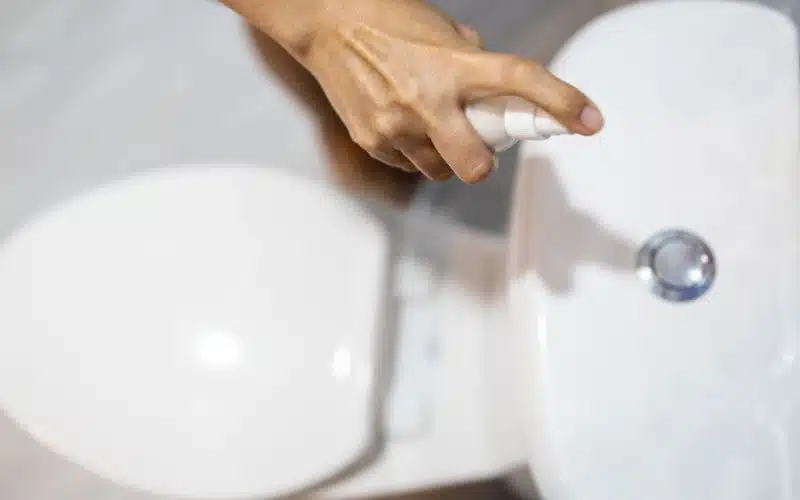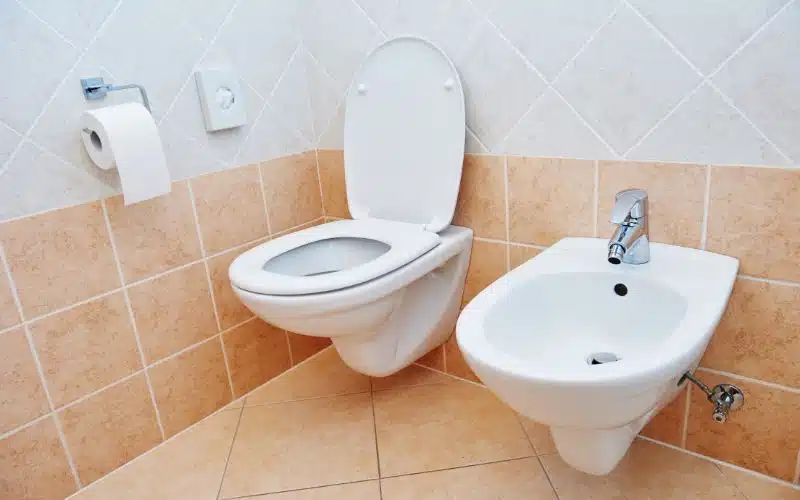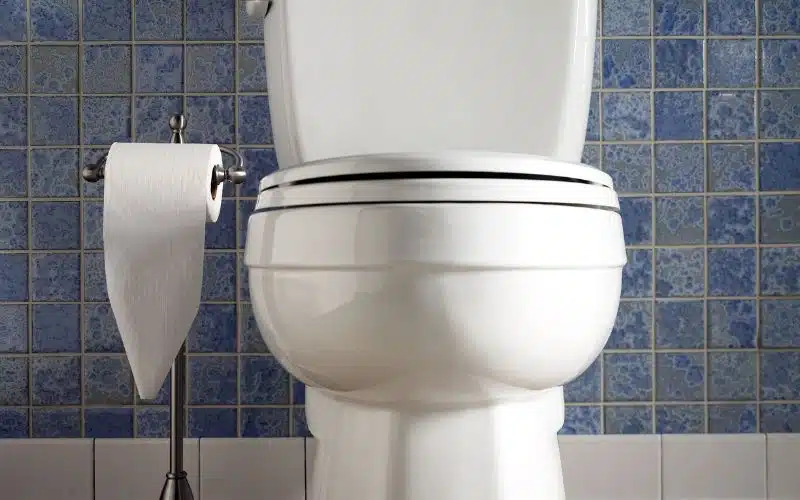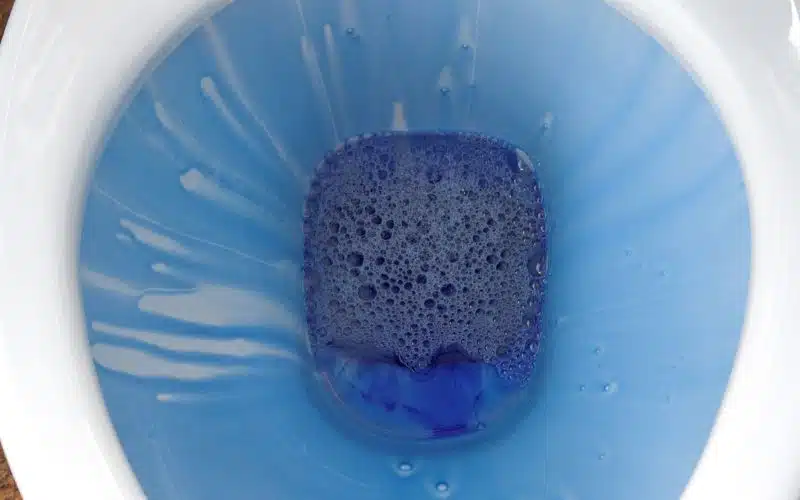Stopping the toilet bowl from refilling can be challenging, especially when all your efforts go down the drain.
When your toilet bowl refills, it may spill down the floor; this can be unhygienic. This article will walk you through a stepwise procedure to stop your toilet bowl from refilling.
To stop your toilet bowl from refilling, you must first identify the problem causing the refill. Then, you try to alter the flush valve stopper or the water level. You may also have to change some parts to see if that fixes it.
How Do I Stop the Toilet Bowl From Refilling?
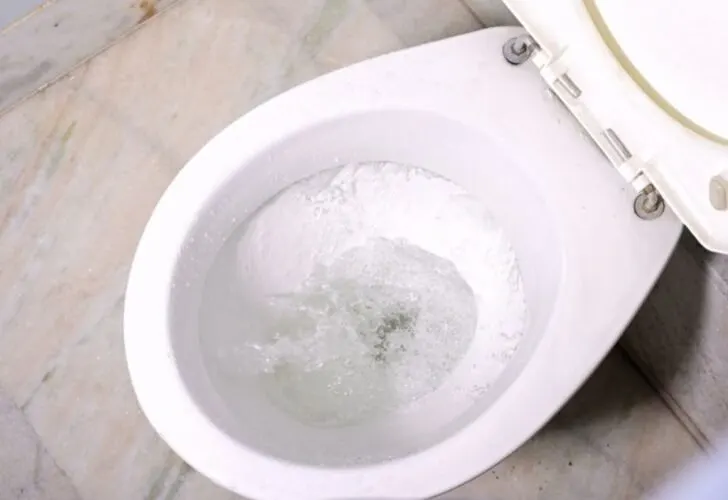
A constant refilling toilet bowl can be problematic and disturbing. It might even make you lose interest in using the restroom when needed.
In most cases, where there is a constant refilling toilet bowl, you should check the flapper; it must be faulty.
A rubber seal is positioned between your tank and bowl; that is the flapper. Water seeping into your bowl results from a worn-out rubber seal or a short chain.
Moreso, it might be that your tank is leaking. That’s why your toilet bowl is filling up. You might have wondered what method to use to stop your toilet bowl from refilling.
I will discuss some steps below to stop your toilet bowl from refilling.
#1. Step 1
In a good water closet, the bowl water is still. However, if the rubber seal leaks, you will notice ripples because of the water streaming from the tank.
To confirm whether the flapper is leaking, you can put dye into the tank and watch to see if you will see the dye in the bowl.
#2. Step 2
After confirming a tank leakage, close the toilet shut-off valve, then flush your toilet.
#3. Step 3
Disconnect and lengthen your flapper chain when you notice an increase in tension.
Then, you turn on the water again to fill the tank. You needn’t work further if you notice the leaking has stopped.
#4. Step 4
Remove your flapper by untangling it from the overflow tube or moving the connected ring upward and out of the tube.
If the leaks persist after lengthening the chain, you must empty the tank again.
#5. Step 5
When you get the new flapper, you install it the same way you took it off (using a reverse procedure).
While installing it, ensure you give considerable slack to the chain and not excessively, or else the flapper won’t flush the toilet.
#6. Step 6
Suppose there is still seeping water beneath the tank. It shows that the bolt attaching the bowl to the tank may have slacked and need tightening.
You tie the bolt using a screwdriver, ensuring it is not too tied. If leaks don’t stop after all these processes, you must replace your water closet washer.
#7. Step 7
You untie, then remove the bolts, and replace the rubber washer. To replace the washer, empty the tank and sponge the water left in the bottom.
Don’t forget to tighten the bolts; afterward, you turn on the water to fill the tank.
Why Is My Toilet Bowl refilling?
It is frustrating to see your toilet bowl refilling after installation for quite a while.
There are many causes of toilet bowl refilling. I will discuss just a few reasons below why your toilet bowl refills.
#1. Change In Water Pressure
A change in the water pressure contributes to your toilet bowl refilling. A change in the water pressure causes the cap of the fill valve to open, allowing water to pass into the overflow valve, which inevitably flows out into the bowl.
#2. Bad Flapper
When the flapper is bad, has a cut, or is not covering the valve properly might be a cause. The flapper works by allowing you to distribute clean water to flush your toilet.
#3. Leaking Tank
A leaking tank is a possibility leading to an increased toilet bowl refilling. When you fail to cover the tube properly, water can leak out of the toilet tank and into the bowl.
#4. Broken Flush Valve
When you cut the valve, water seeps, and the toilet bowl fills. Or the valve could be out of alignment, which you can fix manually.
You verify this by inserting a dye into the tank and observing for ten minutes without flushing.
If the cause is related to leaks, you’ll find the dye in the toilet bowl, but vice versa if the cause is not due to leaking of the tank.
#5. Broken Chain
When you break the chain in the tank, it can cause your toilet bowl to keep refilling.
The handle will become slack and not pull anything if you break the chain. The broken chain may cause the inability to open or close the flushing valve properly.
If this happens, it means filling your tank will become an issue. To solve this situation, you get the chain and fix it.
#6. Bad Fill Valve
Your Fill valve is what fills the tank up after flushing to a regulated level. You can fix this issue by simply adjusting the water level.
Damaging the fill valve might need to be replaced. You can do the replacement of the fill valve from within the toilet tank.
How To Fix a Running Toilet Without a Ball Float?
A ball float is an essential part of your toilet tank that helps control the tank’s water level while the ballcock allows water back into the tank.
Ball floats are spherical and usually attached to the pivoting arm of your ballcock in your toilet’s tank.
In cases where the water pressure is low, the ball float controls the water coming into the tank.
A valve in the ball float allows you to control the water flow. As the water level rises, the ball float also rises to shut off and control the water overflow.
If your toilet tank is without a ball float and it’s running, don’t fret, for there are a couple of steps to get it fixed:
#1. Step One
When fixing a toilet cistern without a ball float, you first shut off the water from entering the toilet tank. The stoppage of water entering the tank gives you a good working environment.
#2. Step Two
It would help if you replaced your fill valve to fix a constantly running toilet without a ball float.
Replace your fill valve every five to six years to curtail unforeseen disruption and enjoy a smooth flushing experience.
#3. Step Three
On second thought, you could take a closer look at your old fill valve to assess the extent of wear and tear. For instance, a replacement will be your option if the tear is too much.
You do the replacement by pulling up the lock ring and then reaching for the fill valve in the base to remove it smoothly by pulling the fill valve upward.
#4. Step Four
Bring out the new fill valve for installation, and the fill valve comes with a base of its own. You install the new fill valve by pushing it down to the existing base of your toilet tank.
At this point, you lock the ring situated behind the fill valve and connect your refill tube to the overflow tube.
However, you should carefully adjust the water level so that it won’t be too high to prevent the toilet without a ball float from filling up continuously.
#5. Step Five
Moreso, if it turns out that the base of your fill valve is not in any good condition for reuse. In this case, you will have to remove the whole unit and replace it accordingly.
#6. Step Six
If the fault is from the hose, you lose the hose by sticking your hand to the base of your toilet tank and unscrewing the hose using an adjustable wrench to remove the lock nut.
After unscrewing the hose, you remove the entire assembly and discard it.
Finally, you install the new unit while paying attention to the height to match the height of both the tank and the overflow tube.
How To Stop a Clogged Toilet From Overflowing?
There are various methods used to stop a clogged toilet from overflowing. In this article, I will discuss one of the methods available. You stop the clogged toilet from overflowing by using a drain snake.
The following are ways to use a drain snake to stop a clogged toilet from overflowing.
- Push a drain snake down your toilet opening. One end of the snake has a handle, and the other has a corkscrew. Push the corkscrew down the opening, and ensure it extends to its limit.
- While the drain snake is in the hole, keep turning the crank until the snake can no longer move. Spin the auger’s handle clockwise with your free hand to break the clog.
- You can now pull the drain snake out of the toilet.
- Using water and soap, you clean the snake. And you dry it off with a paper towel.
- If the clog is not properly gone, you plunge into the toilet.
- After plunging, flush your toilet to clear the exit pipe.
Below is a table showing the pros and cons of using a drain snake to stop a clogged toilet from overflowing.
| Pros | Cons |
|---|---|
| Drain snaking is a decade-old method that has been proven to work over time. | It’s difficult and limited against tough clogs. |
| The pipes are not damaged. | The width of the auger must be the same as that of the pipe to remove clogs effectively. |
Conclusion
To prevent the refilling of your toilet bowl, you must first identify the problem causing the refill.
Then, you try to alter the flush valve stopper or the water level. You may also have to change some parts to see if that fixes it.
